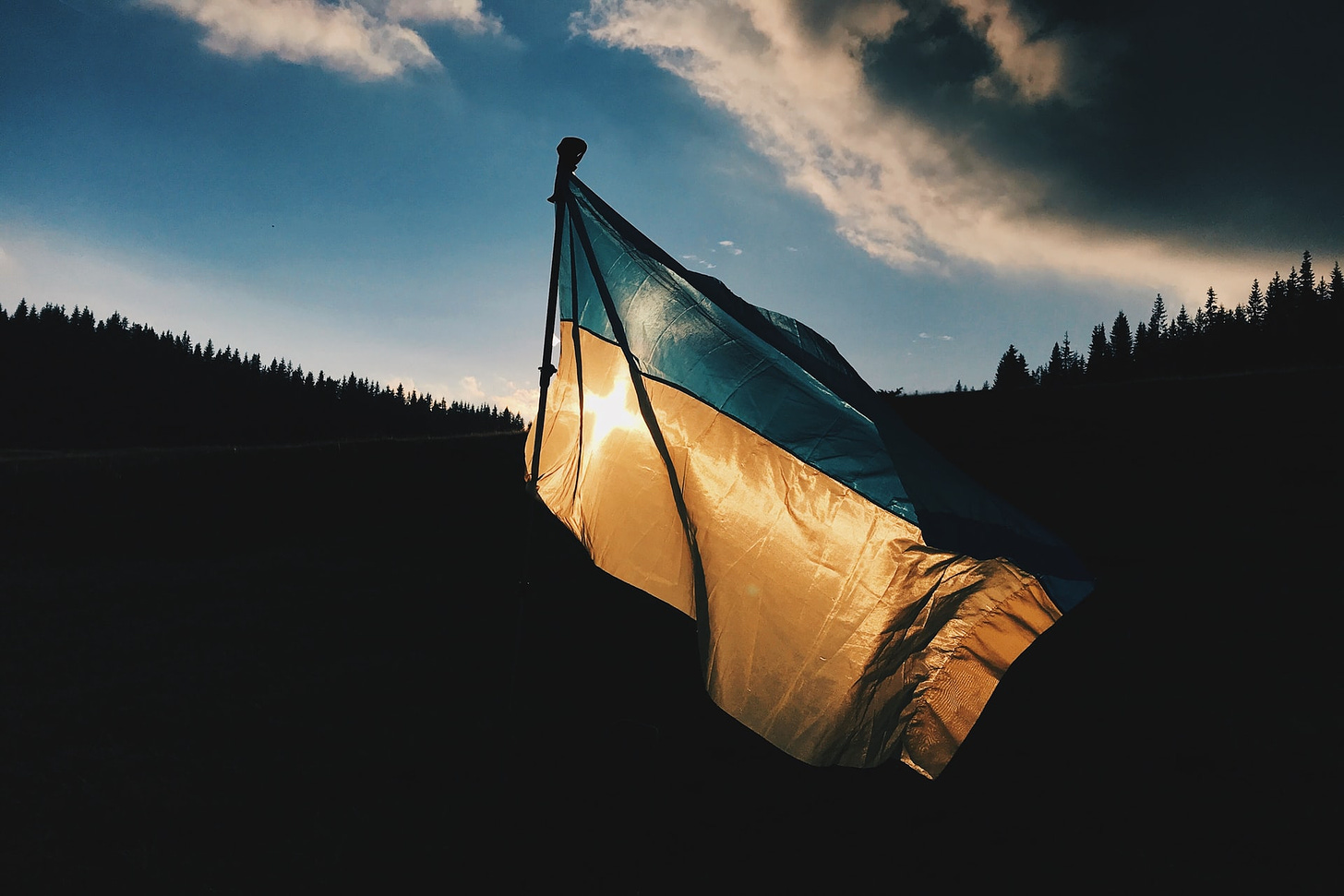
The world has its eyes on Russia and Ukraine. As Russia positions itself for an invasion of Ukraine, the time for diplomacy looks to be running out. In order to understand better what is happening, it is essential to examine the narratives that are shaping this crisis.
To understand what is shaping the conversation regarding the Russia-Ukraine crisis, it is important to first establish who is shaping the narrative. For this analysis, Kudzu consumed data from hundreds of European and U.S. media sources. U.K., Ukrainian, and German media are leading amplifiers among European media. Among U.S. media, a slight left bias was indicated which primarily includes highly reliable sources. With this understanding, we can begin to examine the narrative.
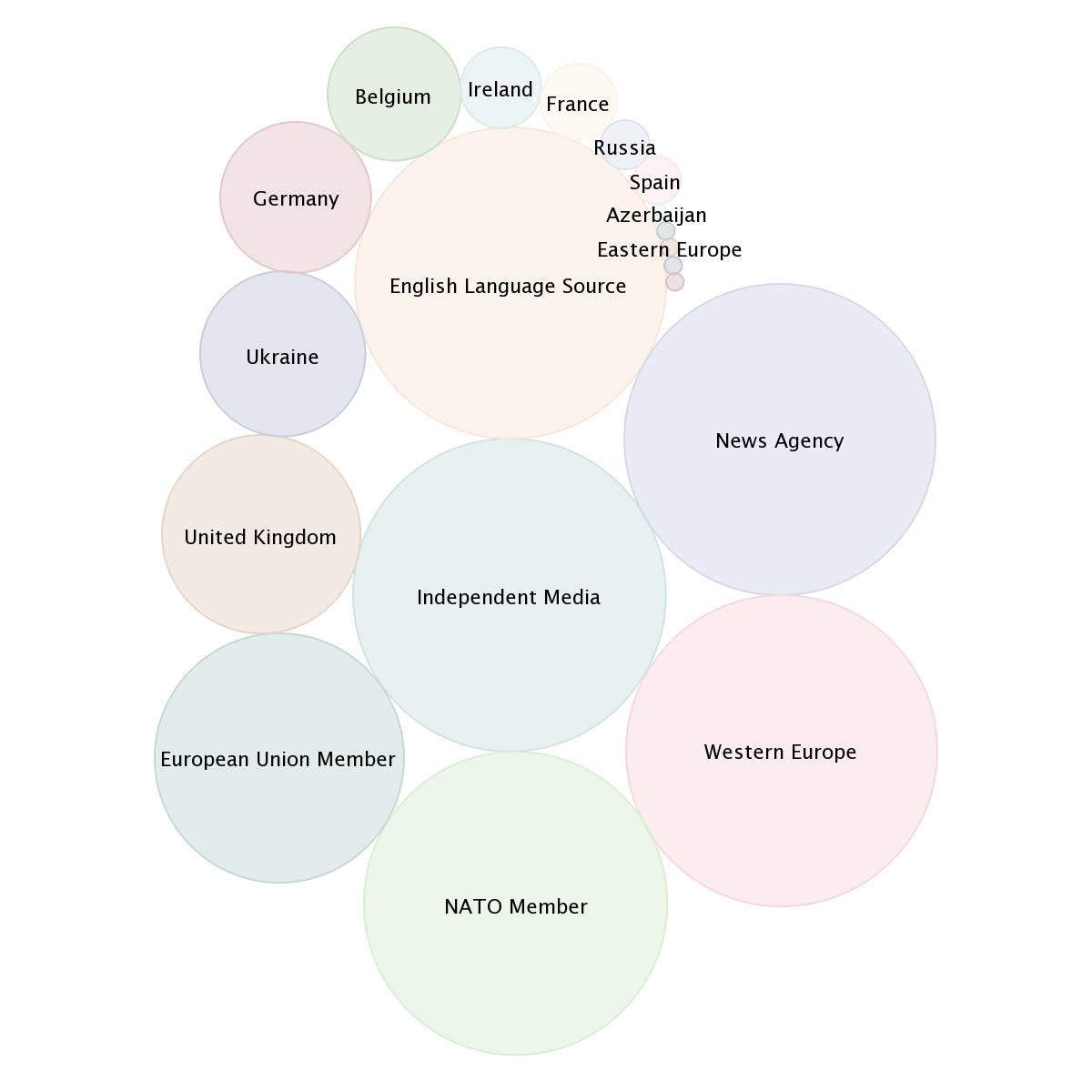
Keywords in both European and U.S. Media briefs indicate the most critical topics. For example, the term “Black Sea” was mentioned in European Media sources 317 times in the past month.
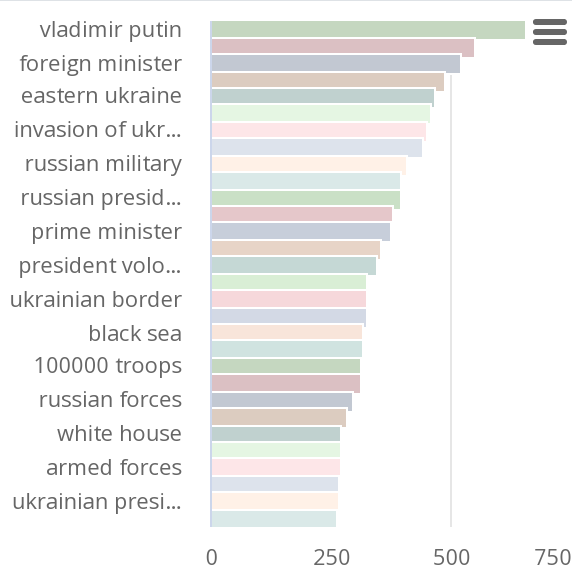
What is so important about the Black Sea? On February 10th, Russia began joint military exercises in the Black Sea and on the ground in Belarus, the largest such exercise Russia has ever conducted with Belarus. This exercise, Ukraine’s Foreign Ministry commented, would make international shipping lanes “virtually impossible” to navigate. Jens Stoltenberg further emphasized this action’s significance: The “warning time for a possible attack is going down.” The same sort of alarm has been raised regarding Russia’s troop build-up on the border as “100,000 troops” and “Russian forces” were each mentioned, about 300 times in European Media and “Russian military” over 400 times. The tone of European media coverage clearly shows a high level of concern that Russia will indeed invade Ukraine.
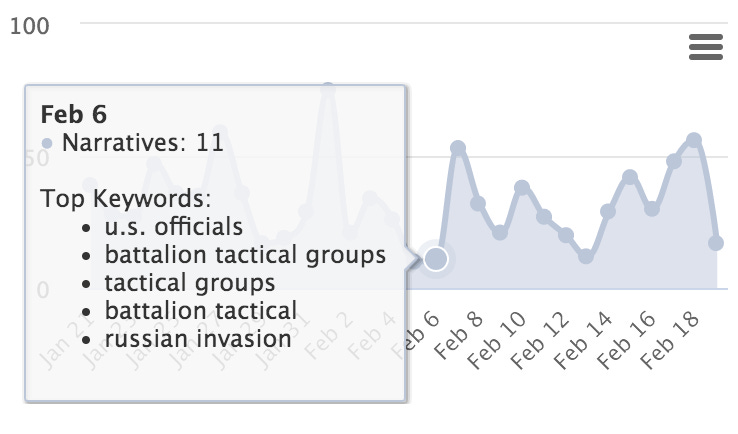
Among U.S. media sources, there was no shortage of mentions of Russian battalion tactical groups (BTGs). This phrase count ticked up following reports that Russia had positioned 83 BTGs near the Ukraine border. Some experts estimate that between 110 to 130 BTGs are required for a full-scale invasion.
On February 17th, the top narrative surrounding the Russia and Ukraine crisis was “false-flag.” It is perhaps the case that the media are trying to make it more difficult for Russia to pull off a false-flag operation as a pretense for war by continually reminding readers of the possibility.
As the likelihood of an invasion seems to have increased, the media narrative has taken a clear shift. Though the threat of an attack has been present for some time, mentions of “Russian invasion” in the media have become much more frequent of late. The phrase “Russia invasion” or similar phrases have shown up as a top keyword on 11 days in the past month; 7 of these appearances have been in the past week alone.
The warning signs of an invasion are clear, but who is trying to stop it? Insights stemming from this narrative show that the media is paying a lot of attention to foreign leaders’ involvement.
Predictably, mentions of Vladimir Putin are numerous, but key phrases in this brief give a broader picture of other leaders involved in the narrative. From early mentions of Joe Biden, Jens Stoltenberg, and Anthony Blinken, to more recent mentions of Boris Johnson, Olaf Scholz, Emmanuel Macron, Ursula von der Leyen, Liz Truss, and “NATO allies”, foreign leaders are prominent players in the narrative.
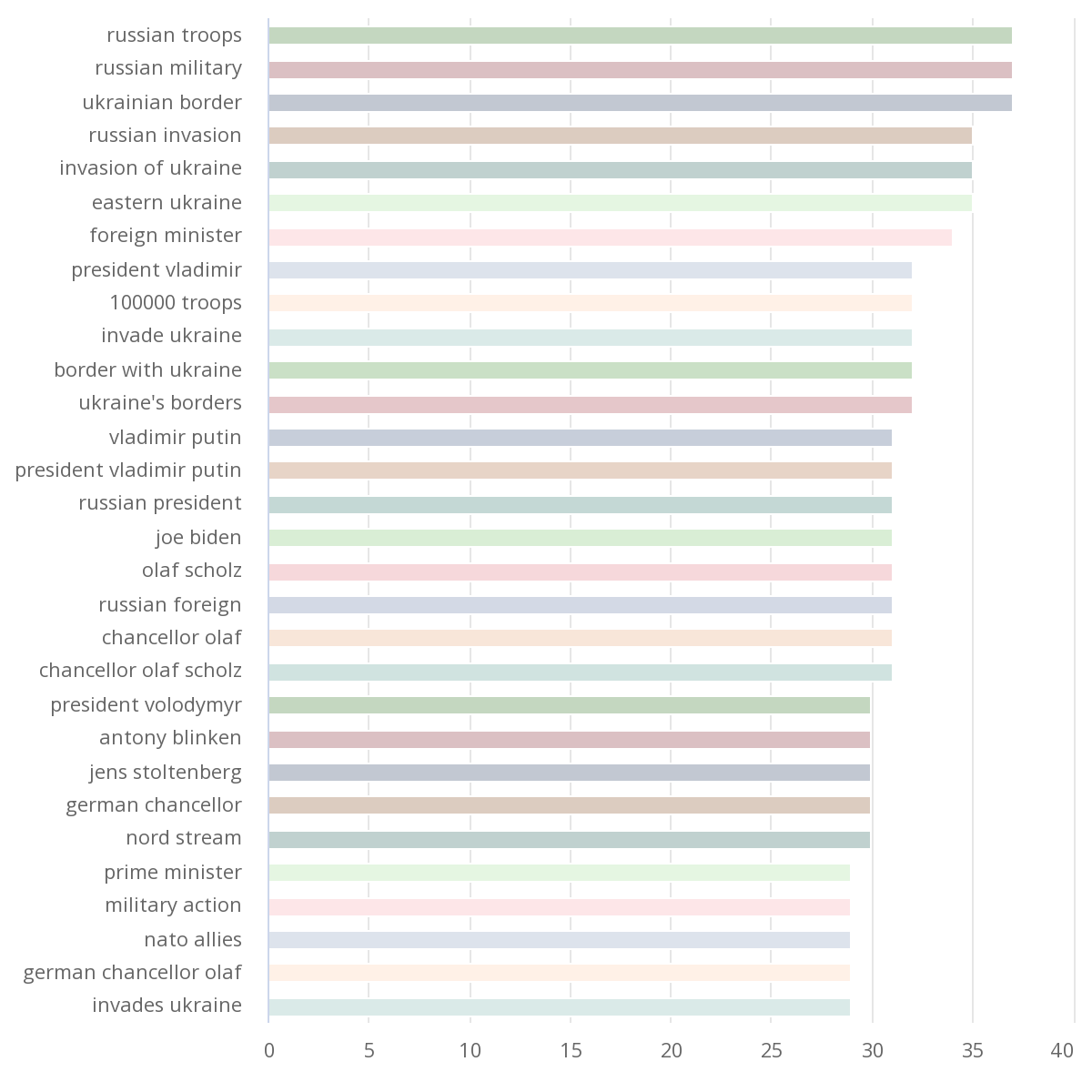
Many of these mentions are a result of Putin’s “parade” of meetings with Western leaders who are seeking to reach a peace agreement. Some of the most notable of these diplomatic talks include German Chancellor Olaf Scholz and French President Emmanuel Macron.
Other leaders have also helped shape the narrative. NATO Secretary General Jens Stoltenberg stated on February 10th that Russia’s actions in the Black Sea were a “dangerous moment” for European security. The phrase “dangerous moment” was echoed throughout media sources as it was the second most-used phrase regarding Ukraine on February 10th.
Despite the involvement of foreign leaders and various attempts at resolving the Russia-Ukraine crisis, there has been no real indication that Russia is looking for resolution. The chairman of the Senate Foreign Relations Committee, Robert Menendez (D-NJ), echoes this by insisting that “the window for diplomacy” is being shut by Putin. While there has long been hope for a diplomatic solution, many observers are saying the situation is looking increasingly bleak. Insights from European and U.S. Media have made it even more clear that the likelihood of a Russian invasion is only increasing, and remains the world’s top security concern.
The Kudzu Narrative Intelligence Briefs that informed this post are available to the public at no charge. Readers are encouraged to view them for more insights into this rapidly-developing situation: